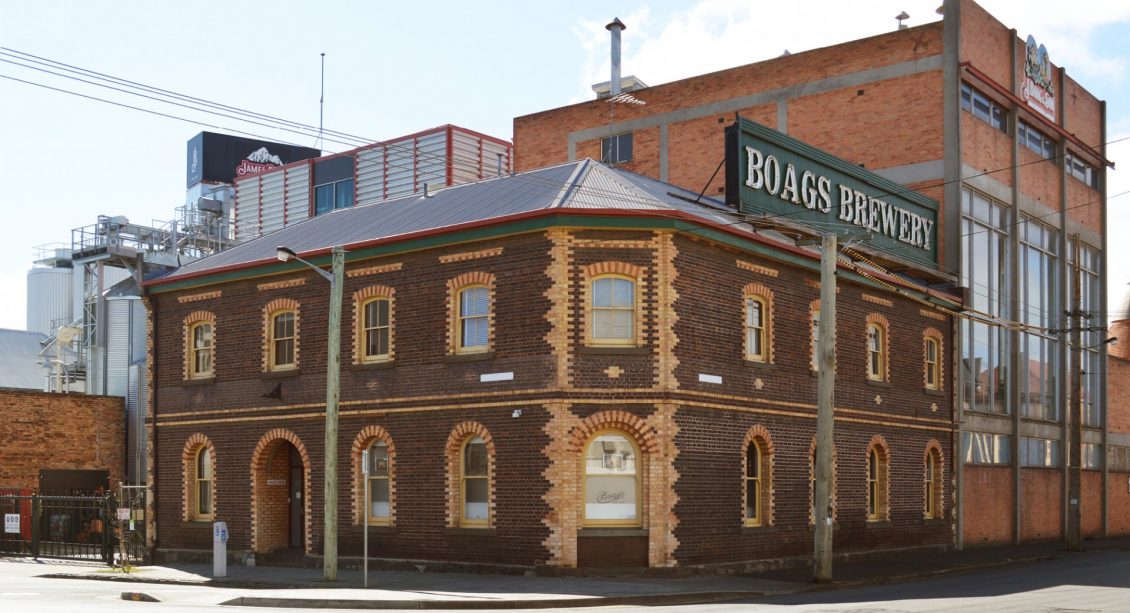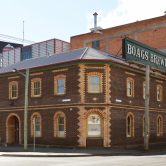Project Overview
The James Boag Brewery was established on the banks of the North Esk River in 1881. In 2004 the Brewery underwent a major expansion to occupy the block enclosed by William, Tamar and Shield Streets and The Esplanade. In 2007 the Brewery was sold to Lion Co. who now own and operate the Brewery and all associated brands.
In 2016 Lion was approached by TasWater to review their existing trade waste discharge agreement. TasWater requested significant changes to this agreement including separation of all current discharge flows. Boags identified that their various trade waste streams required significant capital expenditure to comply with TasWater requirements. These included removing the existing sewer and stormwater inflows from the existing trade water pipework and rerouting to multiple new street connections, rerouting all trade waste to remote sumps and pumping to collection tank, manipulation of material to control temperature pH, and to control the discharge flow rate to Taswater infrastructure.
Based on the success of past projects delivered by McMahon Services at Lion’s West End Brewery in Adelaide and the Wetherill Dairy facility in Sydney, Lion selected McMahon Services to co-ordinate, scope, plan, procure and construction manage this project to meet these objectives.
Scope of Work
McMahon Services were engaged by Lion to deliver a range of civil and building construction works on site to upgrade the existing trade waste system. A key delivery requirement for all works was that the Brewery must remain fully operational throughout the construction period. The project was delivered in three stages:
- Stage 1 involved the separation of the various existing site discharges channels so they are funnelled into either to stormwater, sewer or trade waste systems as appropriate.
- Stage 2 comprised the construction of a buffering infrastructure, a tank farm, various sumps, pumps and associated piping to control the rate of and cool discharge waste, and systems to adjust the pH of the waste accordingly. Various telemetry systems were installed to measure and monitor trade waste flows.
- Stage 3 included the installation and commissioning of a full water treatment system incorporating all aspects delivered in Stage 2.
Associated works to all three stages included building demolition, internal and external excavation, installation of new pipes and sumps, sewer and stormwater tie-ins to TasWater networks both new and existing, construction of a tank bund 50m by 20m that houses the tank farm, construction of the tank plinth that required 26 x 8m deep concrete piles, construction of an enclosed 11m diameter x 8m high stainless steel holding tank, enclosed control dosing tank, tank access staircase, raised steel platform and associated stairs, odour control system, discharge controls, monitoring and water treatment equipment, pumps and piping.
Innovations
It was identified early in scope that the site would require two remote collection sumps. One of these sumps was to be located within the existing distribution area, adjacent a heritage listed wall. Space was at a premium within the operational Brewery, so McMahon Services identified that by using a small sump and utilising the capacity of the in-ground pipework it would have less impact on the overall brewery footprint.
As the scope was developed for the project, McMahon Services identified the need for provision of a full treatment plant. This required forward thinking and allowance for items that would be required to tie-in to the plant should it be constructed in a future date. McMahon Services built the scope of the trade waste system works to accommodate future expansion works.
Project Challenges
As the James Boag Brewery site has continuously expanded from 1881 to today, many changes occurred on site and many new buildings were constructed. Unfortunately, some old practices from earlier times were still in place today. This included the discharge system for site waste with new stormwater simply added to existing lines, as well as toilets, floor waste and site trade waste. Separation of these flows required a detailed review of all inflows. These drawings were then used to plan where and how we should best interrupt inflows and re-route. All of these changes and excavations needed to occur whilst the site was in full operation. In many cases alternative options needed to be undertaken to not disrupt operations.
Our other key challenge was a water table that was 300mm below existing floor level. Dewatering and shoring practices were required at all times to allow safe construction.
Environmental Performance
As the site is a brewery, all spoil is deemed as contaminated. All material needed to be isolated and tested before it could be disposed of. Unknown asbestos spoil was uncovered during excavations which required its safe handling, containment and disposal at EPA approved receiving stations.



